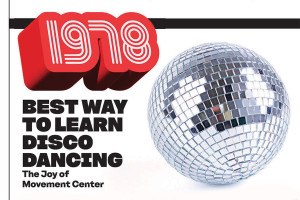Harvard Class Teaches the Design of Desirability
Since Harvard’s founding, princes, future prime ministers, and eight U.S. presidents have walked the university’s hallowed halls. World domination seems like second nature.
But this semester, students from Harvard’s various graduate and undergraduate departments are taking a different path to global conquest. Their goal: to design products and services for maximum public desirability.
On Monday and Wednesday mornings, 28 students, one professor, and special guests from various industries gather in a conference room in Maxwell-Dworkin Laboratory, one of the School of Engineering and Applied Sciences’ buildings. For two hours, they throw around words like “ideate” and “deliverables” as they ponder one central question: what is it that makes a product, service, or experience desirable and thus, increasingly successful?
The class, “Design Survivor: Experiential Lessons in Design for Desirability,” is the brainchild of lecturer Beth Altringer, who specializes in the psychology of design and studied organizational behavior in the other Cambridge, in England.
“Human desirability is embedded in basically all products and services that we consume, whether we’re deliberate about it or not, or whether we’re aware of it or not,” Altringer explains.
She’s been teaching the class for three years now, and has not only seen it draw numerous students from the Graduate School of Design, but also many from the Harvard Law and Business schools and from across the undergraduate college’s majors and minors. This semester, there’s even a cross-registering MIT mechanical engineer exploring industrial design.
While other design-thinking courses directed at non-designers, like those offered by Stanford’s d.school, have been slowly gaining traction at universities nationwide, there’s nothing else like “Design for Desirability” on Harvard’s campus. Class attire at 9 a.m. ranges from leggings to blazers and Uggs to desert boots as students work in their assigned groups.
Every Monday morning, Altinger presents a new design challenge in a new field and creative media—students might be composing a song in Logic Pro, 3-D printing a working pen, or building their furniture designs in a nearby studio.
Their first project this year: take a product from the recently shuttered Skymall catalogue and improve its desirability, from the functionality to its presentation on the page.
Later, in groups, the students will design an experience-in-a-box, in the vein of real-life mystery puzzle games like Downtown Crossing’s Escape the Room. The challenge is also based on the work of fellow Harvardians Randy Weiner and Diane Paulus, the husband-and-wife team who co-created The Donkey Show, an experiential Shakespeare-goes-disco adaption at Club Oberon in Cambridge, as well as New York’s smash hit Sleep No More.
Each of these projects involves a creative design component followed by a presentation to a consumer audience, the latter of which Altringer especially focuses on with the students.
“I want everyone in the class to go from ‘This is cool’ to everyone being able to sell,” Altringer says. “Designers often—and this is a generalization—are less comfortable selling.” And according to Altringer, it takes desirability for a product to sell these days.
But this wasn’t always the case.
First, a product, good, or service is designed to reliably fulfill functional needs, which she says almost any product must meet. Any chair should work as a chair, and it should work predictably.
However, she’s careful to explain that neither functionality nor reliability is a differentiator in most product categories. One aspect that used to be enough to push a service to success is usability.
“There’s a lot of discussion in design about usability—that usually has to do with being simple and clean and understandable,” she says. “It’s not overly complex.”
But a product that isn’t functional, reliable, and useable cannot compete these days, she says. None of them eclipse desirability—a product’s emotional associations.
“You also want to offer something pleasurable to users,” she explains.
For Altringer, the challenges are as much about figuring out what is pleasurable as designing something worth creating.
“Students are learning to design fast, to design for human desirability, to design for collaboration,” she explains. “The point is not to say that you can finish something amazing in a week. The point is to say that if you can finish something compelling in a week, given whatever wild challenge is thrown at you, then you can convince people to give you more freedom to build that project out.”
Harvard College sophomore Sean Weller says the course bridges the gap between engineering and liberal arts, challenging each of the students in different ways.
“It’s unlike any other class I’ve seen here,” he says. “For someone like me, I don’t have the skills of a technical engineer, but this class offers a methodology or a way of thinking.”
That is, one he plans to use in politics after graduation by approaching policy reform from a design perspective. Weller hopes to “put a face on” our country’s institutions, incorporating the principles of desirability he’s learned from Altringer’s course.
Other students mention architecture, biomedical engineering, and educational entrepreneurship in their future plans, spanning academic and professional disciplines.
So, again: taking over the world? It’s inevitable. And with the skills they learn this semester, these Harvard students could also change it along the way.
To learn more about the class and its upcoming projects, check out the course website and portfolio.


